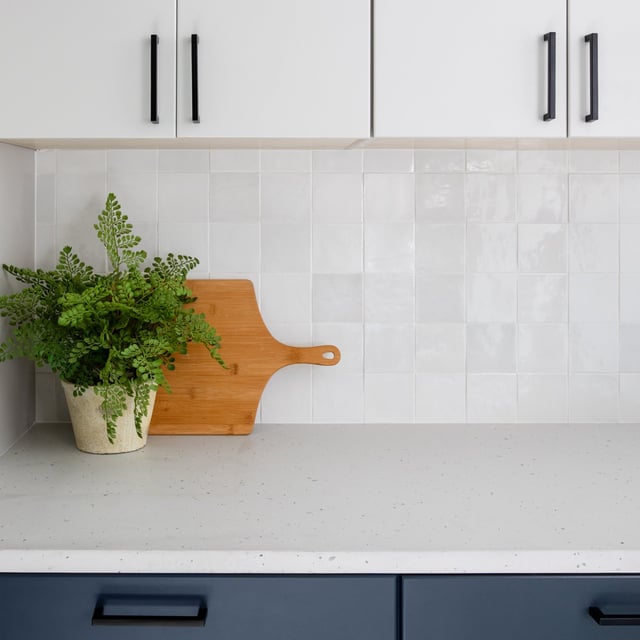
Design
The Ultimate Guide to Kitchen Tiles with Tile Options
04.01.2025

In This Article
Have you ever thought about how to choose a kitchen backsplash that perfectly suits your style and needs? A kitchen backsplash is more than just a decorative element; it’s an essential part of your kitchen’s design. It not only protects your walls from spills and stains but also enhances the overall look and feel of your space.
Picking the right backsplash can beautifully blend with your kitchen's elements or even stand out as a unique feature. As you embark on this design decision-making journey, we're here to guide you through choosing the best backsplash materials for kitchens, ensuring your choice enhances both function and aesthetics.
When thinking about how to choose a kitchen backsplash, it's essential to understand its protective role. A backsplash acts like a shield for your walls, preventing unwanted spills, stains, and moisture from causing damage. This layer of protection can be particularly crucial in areas behind the stove and sink, where splashes are most likely to occur. By keeping your kitchen walls clean and safe, a backsplash reduces maintenance efforts and helps preserve the life of your kitchen.
Beyond protection, a kitchen backsplash enhances the overall design of your space. It serves as a backdrop that ties together various kitchen elements like countertops, cabinets, and flooring. Whether you're going for a cohesive look or seeking to introduce a contrasting element, choosing the right backsplash can create harmony in your kitchen's appearance. Design ideas for kitchen backsplashes can range from subtle to bold, depending on how you want to transform your kitchen's ambiance.
Lastly, kitchen backsplashes add value and personality to your home. They are an opportunity to infuse a bit of your style and taste into the space. Whether leaning towards modern kitchen backsplash trends or timeless styles, your choice can reflect your individuality. Moreover, an attractive backsplash can increase the perceived value of your kitchen during a sale, making it a wise investment.
Learn More: Everything You Need To Know About Kitchen Remodeling In 2025
When choosing a kitchen backsplash, it's important to consider how it will align with your current kitchen design. Your backsplash can either match or contrast with your countertops, cabinets, and flooring. For instance, a matching backsplash can create a seamless look, making your kitchen appear larger and more unified. On the other hand, a contrasting backsplash may act as a bold statement piece, adding an exciting visual dynamic that draws the eye.
Exploring popular kitchen styles can provide inspiration and ideas for your backsplash. Modern kitchens often feature sleek, clean lines with minimalistic backsplashes. Farmhouse styles focus on rustic charm with warm colors and classic tile patterns. If industrial vibes are your thing, consider using metal elements or exposed brick designs. Meanwhile, eclectic kitchens allow for creativity and blending different artistic elements to give your space a unique flair. These popular styles offer a variety of ways to incorporate a backsplash that suits your taste.
Before making your choice, visualize how the backsplash will complement or stand out in your kitchen. Imagine how it interacts with the light, your kitchen appliances, and even the colors of your kitchen wall paint. You can use mood boards, design software, or physical samples to see how different backsplash materials and colors look against your kitchen’s current elements. This preparation ensures that your final decision is both aesthetically pleasing and harmoniously integrated into your kitchen's style.
When it comes to choosing the best backsplash materials for kitchens, the variety of options might surprise you. Each material offers unique benefits, bringing different aesthetics and functionalities to your kitchen. From ceramic to metal, the choice of material can significantly influence the look and feel of your space, making this decision an exciting part of kitchen design.
Ceramic and porcelain tiles are popular choices for kitchen backsplashes due to their affordability and durability. These tiles come in a wide range of designs, from classic to contemporary, allowing you to find the perfect fit for your kitchen’s style. Their easy maintenance and long-lasting nature make them an excellent option for busy kitchens where both function and aesthetics are important.
Glass tiles offer a sleek and modern option for kitchen backsplashes, bringing a touch of elegance to any space. Known for their reflective quality, glass tiles can significantly brighten a kitchen, especially in areas that don't receive much natural light. With various colors and finishes available, they provide plenty of kitchen backsplash design ideas for creating vibrant and eye-catching features.
Natural stone, such as marble or slate, offers a timeless appeal for kitchen backsplashes, adding a sense of luxury and elegance to the space. However, these stones require regular sealing to maintain their beauty and protect against stains, making them a material choice that comes with a bit of upkeep. Despite this, the unique textures and patterns of natural stone provide endless kitchen backsplash design ideas, ensuring each piece is as distinctive as it is beautiful.
For those interested in a contemporary, industrial look, metal backsplash options like stainless steel are a fantastic choice. These materials are not only durable and easy to clean but also lend a chic, modern feel to any kitchen. Stainless steel, in particular, pairs well with most kitchen styles, seamlessly integrating into both minimalist designs and more complex layouts.
Peel-and-stick solutions offer an affordable and convenient option for those seeking to refresh their kitchen backsplash without major renovations. Ideal for renters or anyone on a budget, these materials can be easily installed and removed without damaging walls. With a variety of textures and patterns available, they provide accessible ways to test different kitchen backsplash trends and find the perfect look.

When selecting a kitchen backsplash, the choice of colors and patterns plays a crucial role in defining your kitchen's ambiance. Neutral tones, such as whites, grays, and beiges, offer a timeless appeal, creating a calm and cohesive look that complements almost any kitchen style. These classic options are perfect if you’re looking for enduring kitchen backsplash ideas that won't go out of style.
If you’re seeking to make a bold statement, consider incorporating vibrant colors or striking patterns into your backsplash design. Rich blues, reds, or even a playful pattern can breathe new life into your kitchen, turning the backsplash into a focal point that captures attention. This approach is ideal for those who wish to express their personality and add a unique element to their cooking space.
For those interested in adding texture and depth, mosaics or geometric designs provide exciting options. These artistic patterns can add visual interest, transforming a simple backsplash into an intriguing piece of art. With endless possibilities, from intricate mosaics to clean, geometric lines, these designs can make your kitchen truly one-of-a-kind, perfect for creative kitchen backsplash design ideas.
Selecting the right size and shape for your kitchen backsplash tiles can dramatically influence the overall aesthetic of your kitchen. Subway tiles are a classic choice that offers a timeless, versatile look, making them a favorite for those seeking traditional kitchen backsplash styles. Their rectangular shape and neat arrangement provide a clean and organized appearance that fits well with various kitchen designs.
For a sleek, modern appearance, large-format tiles are an excellent option. These tiles create a seamless look by reducing the number of grout lines, making the kitchen feel more open and expansive. This choice is perfect for homeowners who appreciate minimalist aesthetics and want a backsplash that complements a contemporary kitchen.
If you’re looking for something more distinctive, consider unique shapes like hexagons or arabesques. These tiles add a creative twist to your kitchen, turning the backsplash into a standout feature. With a variety of patterns and shapes available, these options allow for a personalized and eye-catching kitchen backsplash design.
When deciding on a kitchen backsplash, it's important to focus on both functionality and how easy it is to maintain. One aspect to consider is the finish of your tiles; glossy tiles are easier to clean because they repel grease and moisture, while matte finishes might require a bit more effort when it comes to wiping away spills. Your choice in finish can significantly affect maintenance, especially if you have a busy kitchen.
In high-use areas, choosing stain-resistant and waterproof materials is crucial to ensure longevity and reduce cleaning efforts. Options like ceramic, glass, and stainless steel are excellent for their durability and ability to withstand the daily hustle and bustle of cooking. These materials provide peace of mind by keeping your kitchen backsplash looking fresh and clean with minimal effort.
When maintenance is a primary concern, it's wise to avoid designs that require excessive grout. Grout lines can catch grime and are often harder to clean than tile surfaces. Opting for designs with fewer grout lines, like large tiles or seamless panels, can simplify cleaning routines and keep your kitchen backsplash looking its best.
When planning your kitchen backsplash, budget considerations are a crucial part of the decision-making process. Different materials come with varying price tags; for example, ceramic tiles are generally more affordable, making them a popular choice for budget-friendly kitchen renovations. On the other hand, natural stone options like marble or slate tend to be more expensive but offer a luxurious look that many homeowners find appealing when considering how to choose a kitchen backsplash.
In addition to material costs, it's important to factor in installation expenses. If you're skilled at DIY projects, you might save money by installing the backsplash yourself. However, for complex designs or heavy materials, hiring a professional installer can ensure a clean and polished finish, even if it means spending a bit more upfront. Weighing these options will help determine the most cost-effective approach for your project.
Think of your kitchen backsplash as a long-term investment. While some materials might have a higher initial cost, their durability can lead to savings over time by reducing the need for repairs or replacements. Selecting durable materials that stand the test of time not only enhances the aesthetic appeal of your kitchen but also supports wise financial planning in your renovation efforts.
Learn More: How to Remodel a Small Kitchen
The lighting in your kitchen plays a vital role in showcasing your backsplash materials and enhancing the overall atmosphere. Under-cabinet lighting is an excellent way to highlight the backsplash, bringing out the colors and textures of the materials used. This type of lighting not only adds functionality by illuminating your workspace but also creates a warm and inviting ambiance.
In kitchens that lack natural light, using reflective materials like glass or metal can significantly brighten the space. These materials bounce light around the room, making it feel more open and airy. Incorporating such reflective materials into your kitchen backsplash design can transform a dimly lit area into a vibrant, welcoming space.
Conversely, in kitchens that already receive plenty of light, it's wise to avoid overly glossy finishes. Too much shine might cause glare and make the space feel overly bright. Instead, opt for materials with a matte or subdued finish to create a balanced look that complements the light conditions in your kitchen.
When it comes to installing your kitchen backsplash, assessing your own DIY skills is key. For simpler designs, such as peel-and-stick tiles or basic ceramic arrangements, you might feel confident tackling the installation yourself. To ensure success, make sure you have all the necessary tools and follow manufacturer instructions carefully. Taking precise measurements and planning the layout will go a long way in achieving a neat, professional-looking result.
However, for complex patterns or heavy materials like natural stone, hiring a professional installer can be a smart choice. Professionals have the experience and equipment to handle intricate designs and ensure that the heavy materials are securely affixed to the wall. This can save you time and effort, and help avoid potential mishaps or costly mistakes during the process.
No matter who does the installation, preparing your wall surface is crucial for a durable, lasting result. Clean the wall thoroughly to remove any grease or dust, and repair any damages or uneven areas. Depending on the material you choose, applying a primer or waterproof membrane might be necessary to provide a solid base for your backsplash. This preparation ensures that your backsplash will not only look great but also stand up to daily kitchen activities.
In conclusion, choosing a kitchen backsplash involves considering several crucial factors: the style that complements your space, the material that fits your needs, the functionality in terms of maintenance, and, of course, your budget. As you explore different materials, take the time to visualize how each option will look in your kitchen and how it aligns with your personal style.
Remember that the best backsplash materials for kitchens not only enhance aesthetics but also provide durability and ease of care. We're here to help you transform your kitchen into the space of your dreams.
What is the most durable material for a kitchen backsplash?
How do I choose a backsplash that matches my countertop?
Can I install a kitchen backsplash on my own?
What are the easiest backsplash materials to clean?
How do I maintain a natural stone backsplash over time?
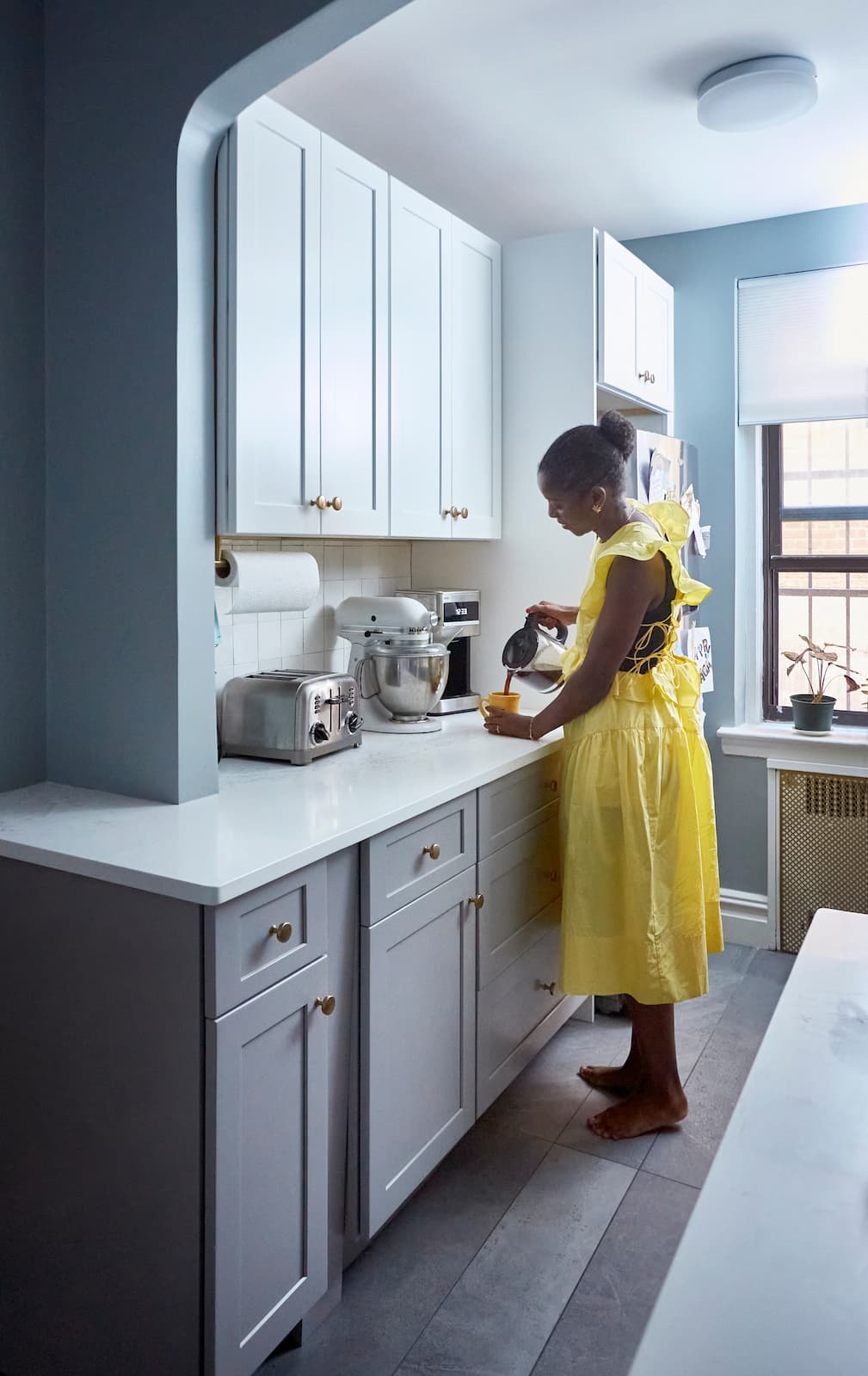
Renovate confidently with Block
Easily compare quotes from top quality contractors, and get peace of mind with warranty & price protections.
Thousands of homeowners have renovated with Block

4.5 Stars (100+)

4.7 Stars (100+)

4.5 Stars (75+)

Design
The Ultimate Guide to Kitchen Tiles with Tile Options
04.01.2025

Design
What is a Frameless Glass Shower Screen?
03.25.2025
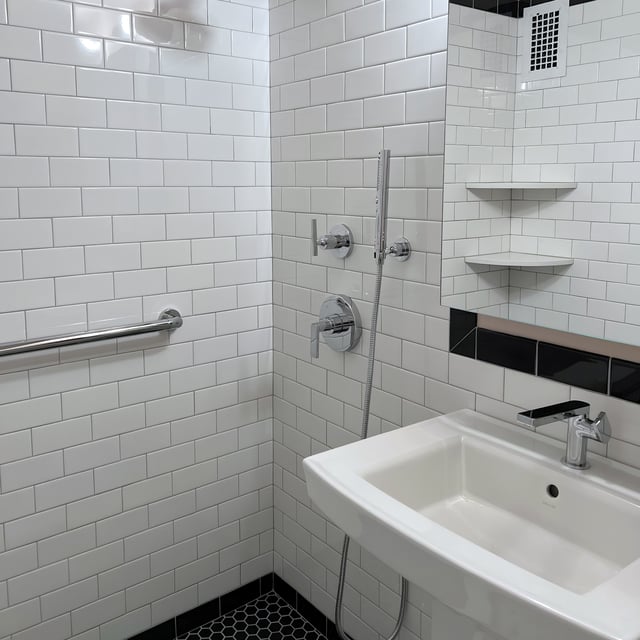
Design
How to Convert a Bathroom for ADA & Handicap Accessibility
03.13.2025
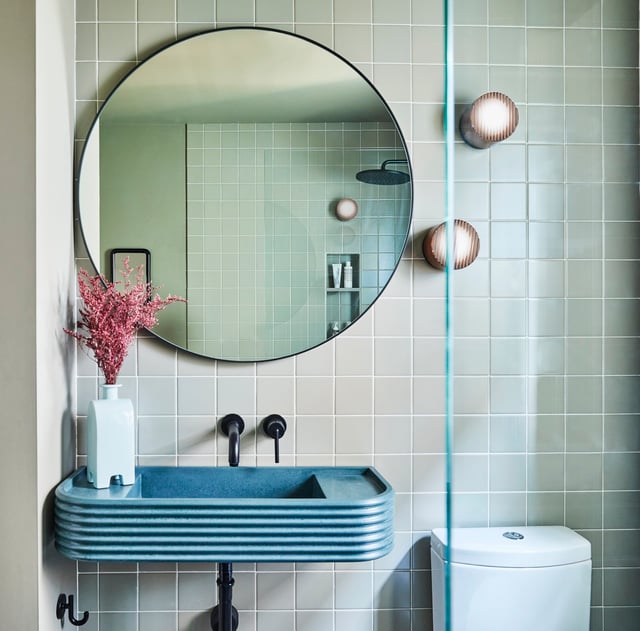
Design
The Ultimate Guide to Bathroom Sizes
03.13.2025
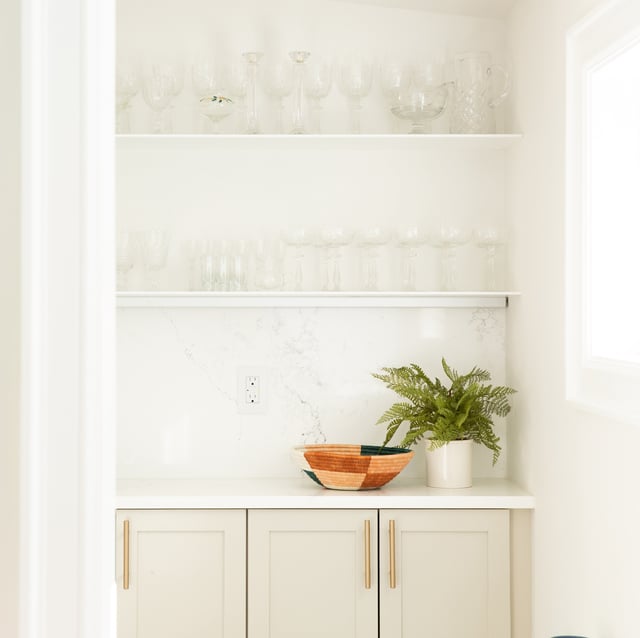
Design
7 Ideas for Open Kitchen Cabinets with No Doors | Block Guides
03.05.2025
Renovate confidently